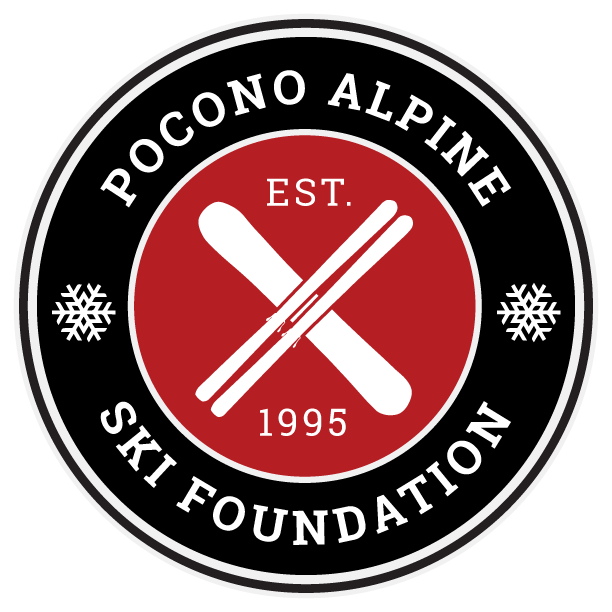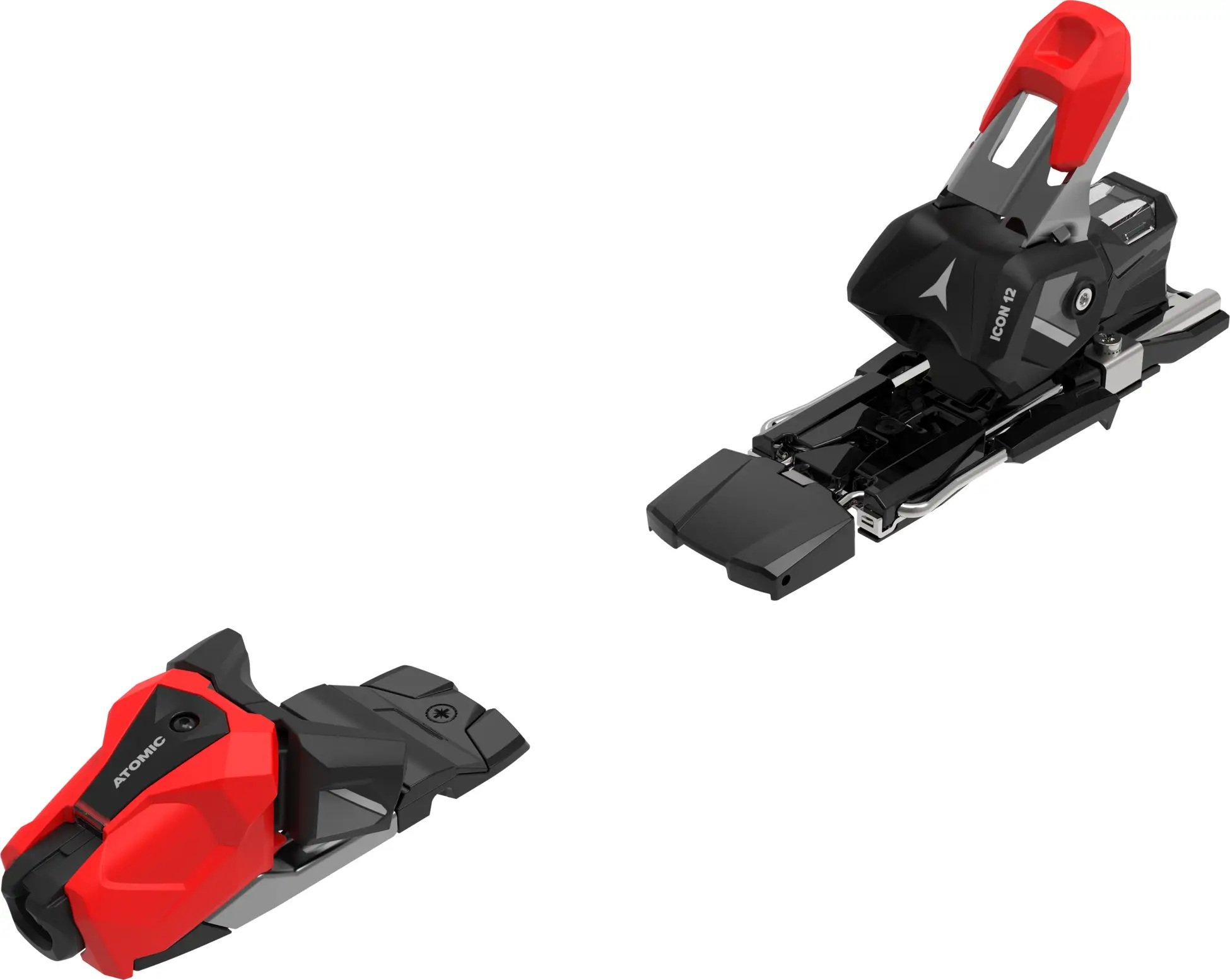Information about Equipment for Athletes and Parents
All athletes are responsible for their own equipment. Depending on the age of the racer, different length of skis and additional protection equipment are required.
Equipment depends on your age level. USSA has very strict guidelines for ski equipment based on age. Visit the USSA website, www.ussa.org regularly to check on ski length limitations, helmet specifications and boot restrictions. Your coaches are extremely knowledgeable resources, but you should always check the USSA website.
Each discipline of ski racing has equipment with different characteristics. Equipment includes boots, skis, bindings, poles, and body protection. Most of the equipment used by youth racers is designated as “junior race”. This separates the equipment from youth recreational ski equipment in terms of design, performance and durability. Junior race equipment is typically available from major name brand manufacturers and is usually available through specialty ski shops rather than large chains that offer recreational gear. Ski shops and online sources catering to ski racers can be found on the PASEF website.
The following guideline will get you started in gear selection although the race team coaches are the best authority if you have questions about equipment.
SKI BOOTS
It’s essential that racers wear ski boots specifically designed and properly fitted for racing. Boots should be 4-buckle models, providing the structure and control needed for competitive skiing. A snug fit is important—not just in length, but also in overall volume. Ski boots are typically categorized as low, medium, or high volume to accommodate different foot widths and shapes.
Each manufacturer has its own fit characteristics.
Junior race boots are also available in varying flex indices, which indicate the stiffness of the boot. Most junior boots range from 60 to 100 flex:
U8/U10/U12/U14 racers generally perform best with boots in the 60–80 flex range.
Stronger or heavier U16 athletes may require stiffer boots in the 90–100 flex range.
Top junior race boot manufacturers include Fischer, Lange, Nordica, Salomon, Dalbello, Tecnica, Rossignol, and Atomic.
We strongly recommend purchasing boots from a shop that specializes in junior race gear and employs trained boot fitters. A proper fitting should include not only correct sizing but also an assessment of the skier’s stance. This may involve canting adjustments, which help ensure the ski lies flat when the athlete is standing. For racers who are slightly knock-kneed or bow-legged, canting can significantly improve ski control. In many cases, boot fitters may also recommend custom footbeds, which enhance fit, comfort, and performance.
SKIS
Super-G (SG), Giant Slalom (GS), and Slalom (SL) skis are designed for different alpine racing disciplines, each with unique characteristics. SG skis are the longest and most stable, built for high-speed turns on wide, sweeping courses. GS skis are slightly shorter, designed for medium-radius turns with a balance of speed and control. SL skis are the shortest and most agile, made for quick, tight turns on the shortest and most technical courses. Each type of ski is tuned for the specific demands of its race format, emphasizing different aspects of edge grip, turning radius, and stability.
BINDINGS
Ski bindings are a critical component of your setup, connecting your ski boots to your skis while allowing for controlled release during a fall to help prevent injury. They play a key role in both safety and performance, transferring energy from your body to the skis. Proper adjustment to your weight, skill level, and skiing style is essential for optimal function. Always have bindings professionally mounted and checked before hitting the slopes.
POLES (GS/SL)
Giant Slalom (GS) poles and Slalom (SL) poles are designed differently to suit the unique demands of each discipline. GS poles are longer and feature a slight curve to help racers maintain an aerodynamic tuck position and reduce wind resistance during high-speed turns. In contrast, SL poles are shorter and straight, allowing for quick, agile movements and easier gate clearing. Slalom poles are often paired with pole guards to protect the hands from gate impact. Choosing the right type of pole ensures better performance and safety in each event.
HELMETS (GS/SL)
A hard-sided helmet is required and must be FIS-approved with the FIS RH 2013 sticker clearly visible on the back. This standard ensures the helmet meets impact and penetration resistance for higher-speed disciplines.
Helmets used for slalom must not have a chin guard removed from a GS helmet. Athletes typically wear a helmet with a removable or fixed chin guard specifically designed for SL. FIS certification is not required for SL, but the helmet must still meet general USSS safety standards.
GOGGLES
Goggles are essential for alpine ski racers, providing clear vision and protection from wind, snow, and sun. A good pair of race goggles should offer a secure fit with a helmet, anti-fog lenses, and high visibility in varying light conditions. Many racers choose goggles with interchangeable lenses to adapt to changing weather. For young athletes, comfort and a wide field of vision are key to helping them stay focused and confident on the course.
POLE GUARDS
The new Atomic pole guards are designed for maximum protection and performance in slalom racing. Built from durable, impact-resistant plastic, they shield athletes’ hands and knuckles from gate strikes while maintaining a lightweight feel. These guards feature a low-profile, aerodynamic design that minimizes drag and fits securely on most standard race poles. Easy to install and built to withstand repeated impacts, they’re a smart upgrade for racers looking to stay fast and protected.
SHIN GUARDS
Shin guards are a key piece of protective gear for slalom ski racers. Worn over the front of the lower legs, they protect athletes from repeated impacts with slalom gates, which can cause bruising or injury. Made of hard plastic or composite materials, shin guards are secured with adjustable straps and worn over the race suit. They’re especially important for U12 and older racers who are learning to ski a direct, aggressive line through gates.
FOREARM GUARDS
Forearm guards are protective gear worn by alpine ski racers—especially in slalom—to shield the forearms from impacts with gates. Made from durable, lightweight plastic or composite materials, they help prevent bruising and injury while allowing racers to maintain an aggressive line through the course. Forearm guards are typically worn over the race suit and secured with adjustable straps for a snug, comfortable fit. They're an essential part of slalom safety equipment for U12 and older athletes.
GS SUIT (GS/SL)
A GS (Giant Slalom) suit is a specialized, form-fitting race suit designed to reduce wind resistance and enhance speed during alpine ski racing. Made from stretchy, aerodynamic materials, GS suits provide a close fit that allows maximum mobility while minimizing drag. Many suits include light padding in key areas like the forearms, thighs, and shoulders to offer added protection during gate impact. While they are most commonly used by older or more competitive athletes, GS suits can also help younger racers develop proper technique by allowing better freedom of movement and feel for the snow.
BACK PROTECTOR
The Atomic Live Shield Vest M is a lightweight, low-profile back protector designed specifically for alpine skiers seeking both comfort and safety. Featuring multi-layered, flexible foam construction, it offers certified spinal protection (EN 1621-2 Level 1) while maintaining a slim fit that won’t restrict movement. The breathable materials and adjustable waist belt ensure a snug, secure fit under a race suit or jacket—making it an ideal choice for both training and competition.
MOUTHGUARD
A mouth guard is a simple but important piece of protective gear for alpine ski racers, especially in slalom where gate impact is common. It helps protect the teeth, lips, and jaw from accidental hits or falls. Many athletes wear custom or boil-and-bite mouth guards that fit comfortably inside the helmet. While not mandatory for all racers, it’s a smart safety addition—especially for younger skiers and those wearing chin guards in slalom.
TRAVEL BACKPACK
A quality Atomic ski backpack or ski boot bag is essential for carrying water, snacks, and gear during training sessions and races. The best bags feature padded shoulder straps and a waist strap for added comfort and support.
SKI BAG
The Atomic Travel Ski Bag is a great choice for young athletes and ski families on the go. It’s padded to protect skis during travel and big enough to fit one to two pairs of skis and poles—perfect for race weekends or vacations. With easy-rolling wheels, sturdy handles, and adjustable straps, it’s simple for parents or older kids to pull through airports or resorts. Its strong, water-resistant fabric keeps gear safe and dry no matter the weather.

















